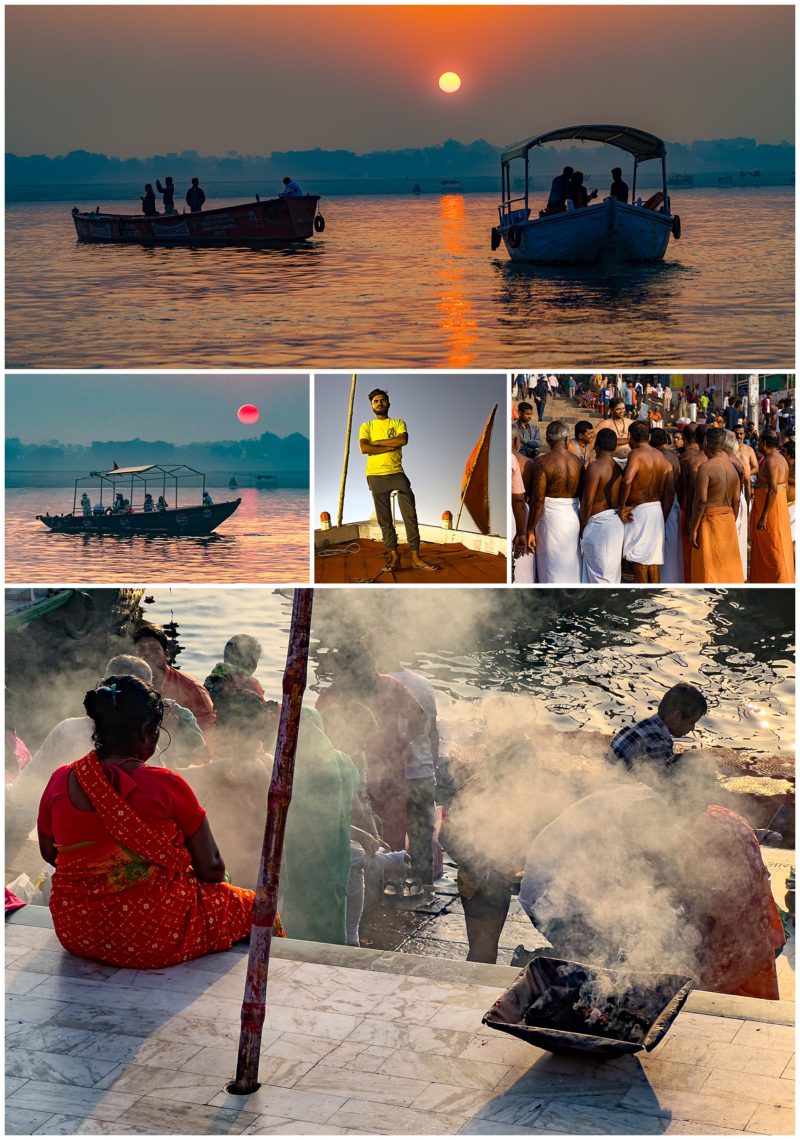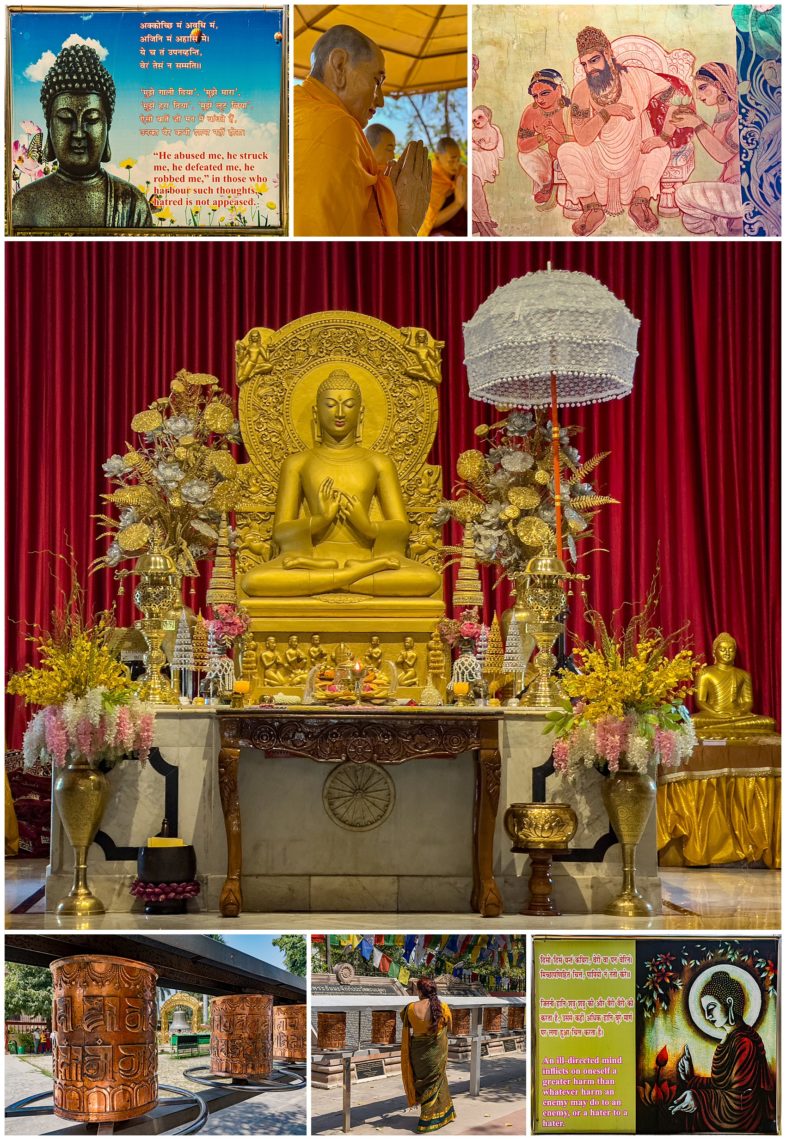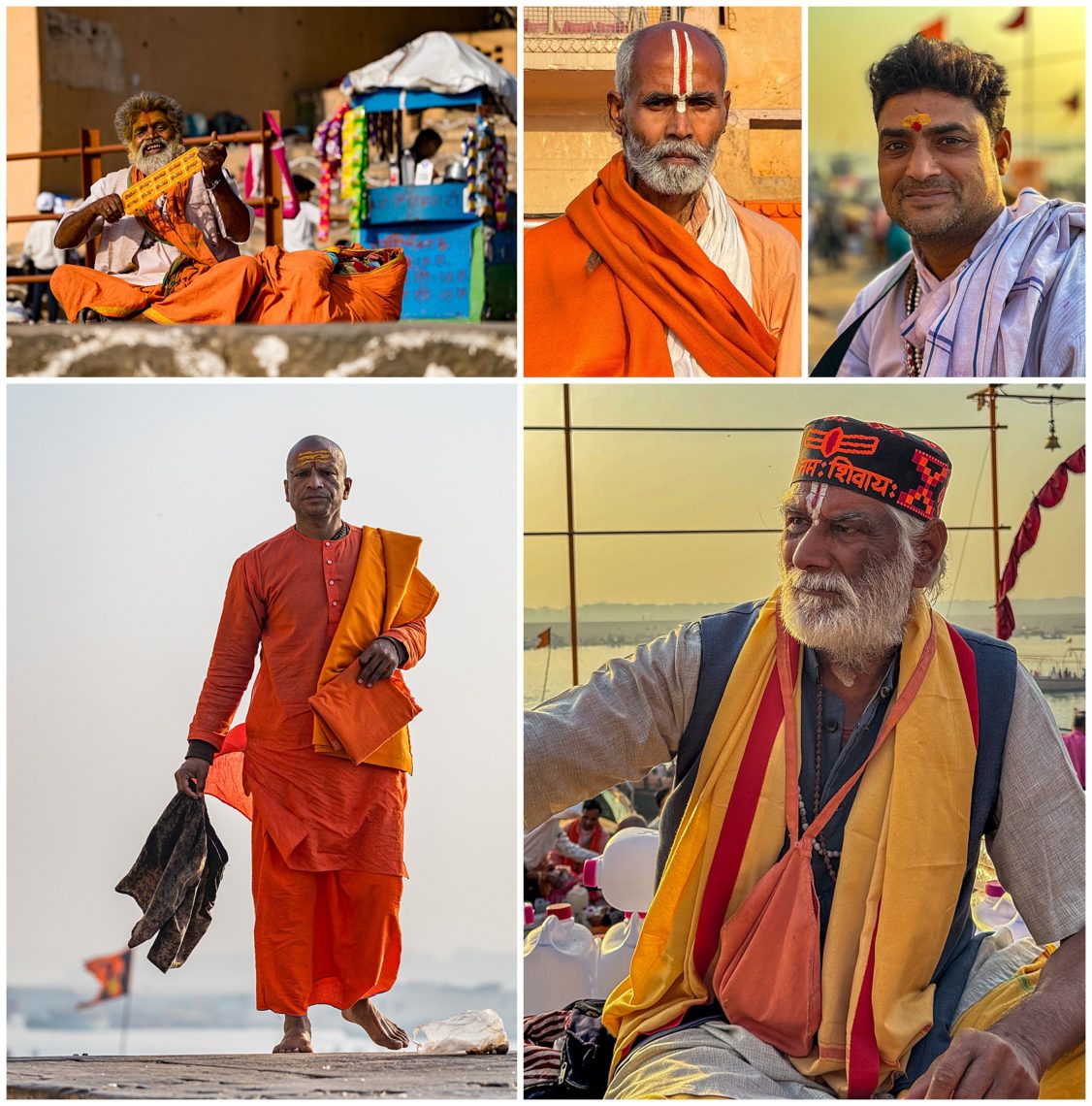
In addition to being known as the city of Death, Varanasi is also called the City of Light, and renowned as a city of learning for centuries. In ancient India, its name is derived from the Sanskrit verbal root Kashi, meaning “to shine”. The city has 8 universities imparting traditional religious education. Also, many come to study philosophy, Sanskrit, astrology, as well as modern sciences. This city has a 79.2% literacy rate, compared to 79% in the USA. Varanasi is considered one of the oldest cities in the world (at least 10,000 years old) and you can see the ancient architectural styles as you float along the river.

Ganges River is a source of water to 40% of the people in India, and is considered a lifeline in India. It is sacred to Hindus and has many cultural and practical significance. For some people, it’s their livelihood, including bringing food to market up and down the river, source of many jobs (including our boat captain), cremation, cleaning. For others, it’s their place for socialization and for others, it’s a place for meditation. More significant is that the fertile soil grows the crops that serve the area. Yet, it is threatened by severe pollution. Hopefully the Indian people will rally to clean up their river.

Varanasi is also known as the spiritual capital of India and the birthplace of Buddhism, where Buddha conducted his first sermon at a Buddhist Center called Sarnath. Around the Buddhist Temple are many educational phrases on placards (upper left and lower right). Currently, 80% of the Indians are Hindu, 14.2% Muslim, 2.3% Christian, and 0.7 % Buddhist. The balance includes Jain, Sikhs and other smaller groups.

India is comprised of 14.2% muslim, and we had a chance to see a mosque which is nicknamed “Baby Taj” (right), designed by the same architect as the Taj Mahal. There were great reflections, and we learned the reverence of ayatollahs from Iraq and Iran (middle left). The fastest growing religion in India is Muslim, primarily people from Pakistan.

Varanasi is a center of arts, crafts, music and dance. Its musicians and dancers have gained international fame. Varanasi is considered the cultural capital of India, and famous for its saris, gold and silver jewelry, and opulent embroidery, as well as dance and music. We were introduced to the classical Kathak Indian dance form above, which was astoundingly mesmerizing. When the dancer performed, her movement was characteristic of flamenco dancing combined with tap dancing, but she was barefoot, slapping the white marble floor instead of hard sole dance shoes with metal taps. Incredible. Watch the video below to see and hear her in motion.

Varanasi is such a diverse city with something for everyone. In 2023 it was declared as the first Cultural & Tourism Capital of SCO. This designation will be a boost in tourism and showcases what this city offers. We saw very few western and Asian tourists in this city. Most appeared to be pilgrims visiting from other parts of India, and we enjoyed seeing many characters.

We admired how ornately dressed the Indian women are when they are in public. We also found that women are fully dressed when they go down to the Ganges to cleanse their souls. (left middle)

What is always fascinating is the huge loads that are carried by bicycles around the country.
This is the final blog for the Ultimate India Photo Tour with Fantastic Tours We want to thank Mehmet and our guides, Singh, for showing us places we would never have explored on our own. Next stop is Gujarat, located on the western coast of India, for our second tour of India this year.
Classical Kathak Indian dance, Varanasi, India, performed by local artist. We were surprisingly impressed when watching her perform in a private show for our group.